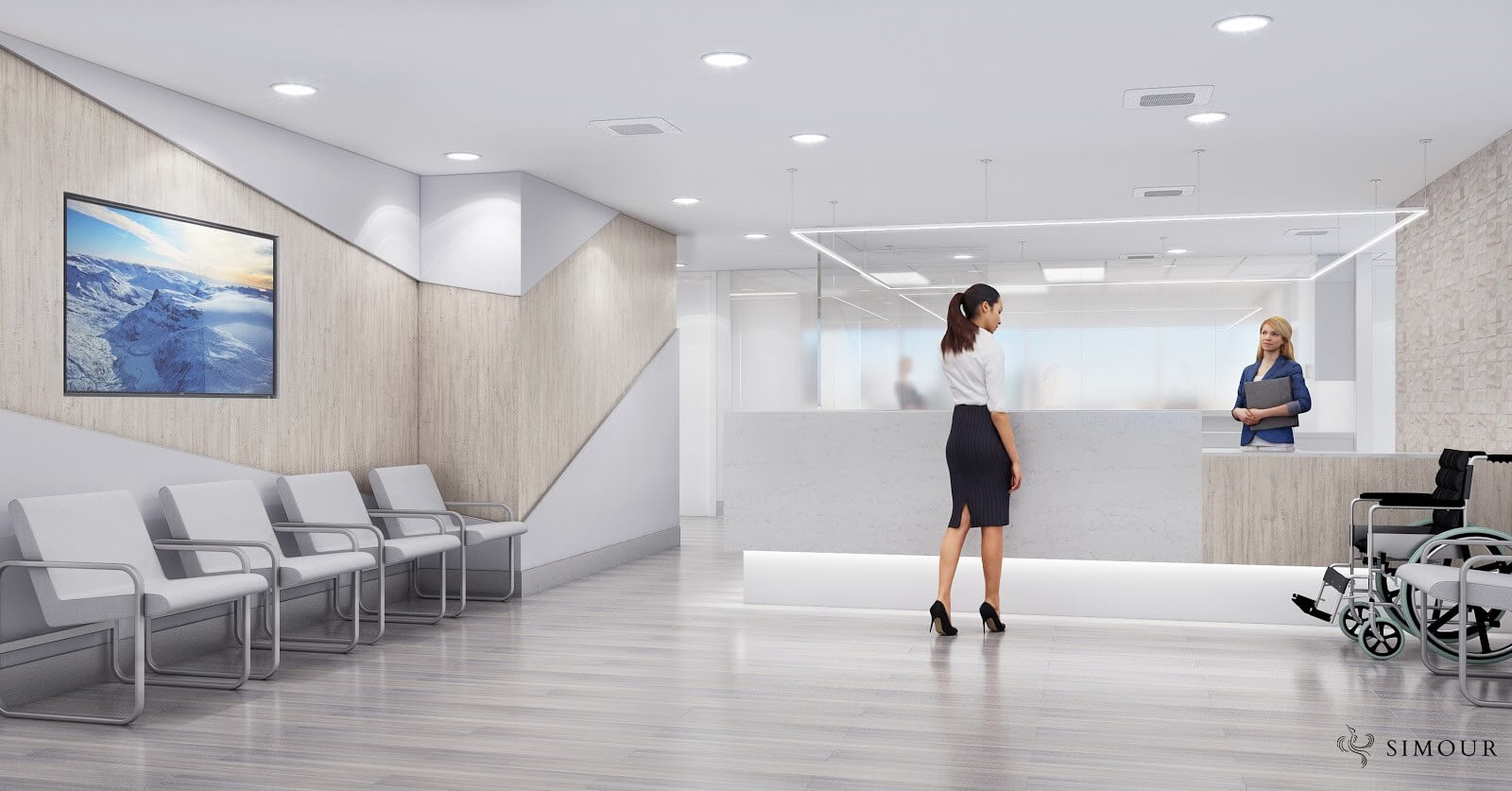If building or renovating your medical space is a journey, wouldn’t you want to be guided by someone who really knows the way?
The biggest difference between medical interior design and regular interior design is the expertise – specialized knowledge of the details that make medical spaces ergonomic and with greater longevity. As we outline the distinctions that make Medical Interior Design valuable for your projects, make note of how much it saves you time, money, and effort.
-
Patient Psychology
An expert Medical Interior Designer knows that Patient Psychology is key. Integrating this knowledge to your project will have meaningful results to contribute to the patient experience. Having a professional designer onboard who understands patient or human psychology ensures that your project will yield a human-centered design, and ultimately long-lasting success.
Simon Sinek and his Golden Circle theory is particularly helpful in our design process in establishing the core of your practice. A Medical Interior Designer will be able to facilitate with you in developing the “Why” of your space much more clearly. After the design is evolved further by the design process by working with mood boards, space planning, color and material selection, and design drawings and other design decisions that will achieve the overall concept of your project. How would you like your patients to feel? Your first 5-second impression is the golden key. If your branding message, meaning your logo, website, and interior design speak the same language, you already created trust with your patients and your team. It’s important to let your patients know through your design and branding that the intention is to serve them and help them thrive.
-
Material
Aside from psychology, another expertise that separates the Medical Interior Designer from a Regular Interior Designer is the familiarity of materials that work best for medical spaces. Having a source person to know what is durable to high-traffic or heavy traffic, what is required to pass certain codes, and what qualities are necessary to pass sanitation requirements will save you time and headache from researching the material yourself.
Take great care in making sure that materials used in your interiors are commercially durable (and depending on the placement, even medical-rated is sometimes required to pass fire hazard code and create a safe environment), easy to maintain, and cohesive with the rest of your space and location. The market is filled with options that target the medical industry so select a professional who is familiar with quality materials and has prior experience.
-
Space Planning
Expertise sets the Medical Interior Designer apart from Regular Interior Design. Specialized knowledge of Patient psychology and materials helps make an intentional planning process.
Change perspective to the eyes of the patient and walk through your space. This exercise can provide insight on what to improve, what more to add, and what to subtract. Is your printer too far away from your receptionist? Is your call center too close to the waiting room? Or is the IT closet right in the middle of the waiting room going to take away from the experience when the IT guy comes for repairs? Take into account their comfortability and again, the patient psychology.As well as patients, consider the work of the team. Planning to make the work as organized and smooth as possible directly contributes to the work culture. Plan with purpose and intention – to create a wonderfully positive patient experience, have a complete approach that involves hospitality, ergonomics, and technology within your interior design.
These are just a few of the many reasons why working with a medical interior designer (vs. a regular interior designer) is a key factor in building your own medical space. With their experience and expertise in what medical spaces need to be, you can rest assured knowing that you’re not only creating a beautiful medical facility, but an equally amazing and functional facility that puts your patients and your needs as top priority.




